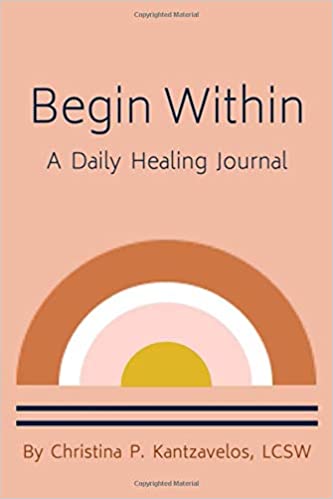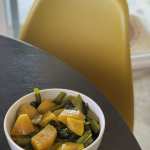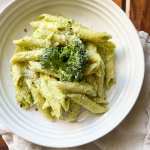Cooking Seasonally (aka with what you already have!)
Cooking Seasonally (aka with what you already have!)
Written by Christina P. Kantzavelos
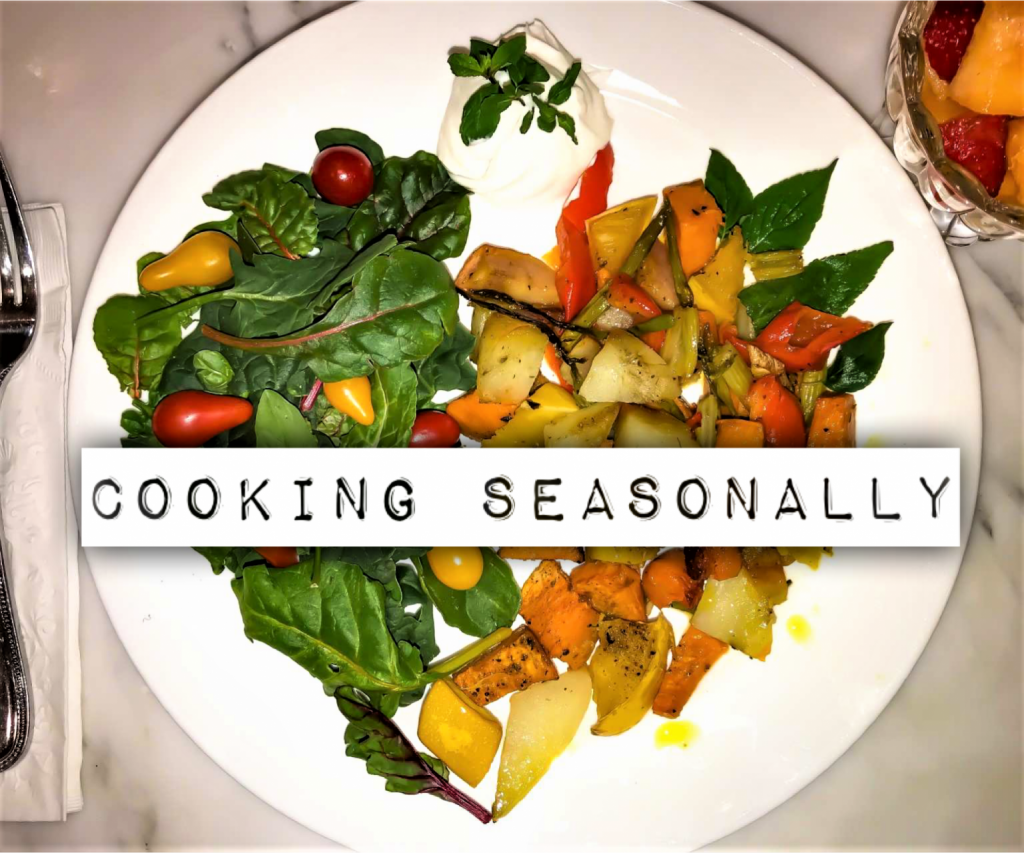
All food has a time, and a season, and as a local, and organically grown farm, we grow and sell what’s in season in San Diego, Claremont, Riverside & San Bernardino Counties. Here is why you should buy and eat what’s in-season, wherever you are in the world…
Until semi-recently, we all feasted on what we could grow. There was no option to have fruits and vegetables imported to our local or mega grocery stores, from other parts of the county or world. We enjoyed what was available to us, right here, and now.
When we eat seasonally, we are purchasing food as close as possible to the time it was harvested. What does that mean?
#1 Nutritional Merits
The nutritional merits of fruits & vegetables steadily loose vitamins while in storage & transit. Their antioxidants decrease rapidly after harvest making it difficult to reap the full health benefits of fresh produce. This is why buying directly from a small farm is so important. You are getting the most nutritional benefit (AND TASTE) when you eat what’s harvested at its peak of freshness. Just think of what transit times do to taste and nutritional benefits, not to mention the unnatural preservation methods needed to get it to you in one piece.
Did you know that in 1951, an adult woman could meet her daily requirements of vitamin A by eating two peaches?
But by 2002, she would need to eat 53 peaches to obtain the same amount of vitamin A (Ramberg and McAnnelley, 2002). Studies have shown that tomatoes harvested green have 31% less vitamin C than those allowed to ripen on the vine (Lee and Kader, 2000).
Vine ripened red peppers too, have about 30% more vitamin C than green peppers (Howard et al., 1994). It is not just vitamin C content that is reduced, in fact vine ripened tomatoes contain more of the important antioxidants beta carotene & lycopene than those harvested prematurely (Arias et al, 2000).
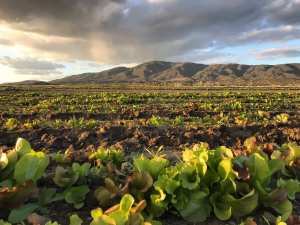 Lettuce loses 46% of some key nutrients within 7 days of cold storage. Spinach loses 22% of lutein and 18% of beta carotene content after just eight days of cold storage (Ramberg and McAnnelley, 2002). Culinary herbs, when used fresh, contain significant amounts of antioxidants. These antioxidants decrease rapidly after harvest making it difficult to reap the full health benefits of fresh culinary herbs with products from commercial grocery stores (Bottino, 2010).
Lettuce loses 46% of some key nutrients within 7 days of cold storage. Spinach loses 22% of lutein and 18% of beta carotene content after just eight days of cold storage (Ramberg and McAnnelley, 2002). Culinary herbs, when used fresh, contain significant amounts of antioxidants. These antioxidants decrease rapidly after harvest making it difficult to reap the full health benefits of fresh culinary herbs with products from commercial grocery stores (Bottino, 2010).
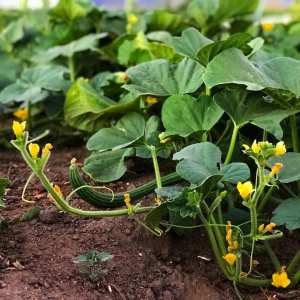
“Over time, vitamin stability decreases,” says Erika Ichinose, program coordinator for the Farmers Market Nutrition Program at Cornell University.
Conventional romaine might look an awful lot like the romaine from a small farm, but on the inside it tells a whole different story!
Small farm’s hand-harvest, hand-pack and hand-deliver their farm fresh produce in a farm share program called “CSA” (Community Supported Agriculture) usually within days of the field. Now, that’s love!
# 2 Nutrient Rich Soil
The key to healthier produce is healthier soil. Locally grown produce in nutrient-dense soil is packed with unbelievable flavor! Organically grown in, when, and how it’s supposed to grow… Without unnatural preservatives and chemicals.
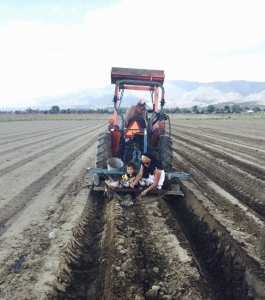 The importation of organic inputs such as manures, composts, and recycling of on-farm organic matter, conditions the soil with healthy, organic plant nutrients that feed the plants, which in turn feed you!
The importation of organic inputs such as manures, composts, and recycling of on-farm organic matter, conditions the soil with healthy, organic plant nutrients that feed the plants, which in turn feed you!
At Sage Mountain Farm, we rotate our fields with cover cropping. Cover-crop improves soil health, helps to control pests and diseases, while increases biodiversity and brings a host of other benefits to what we grow on the farm. To grow from seed into ripe, mature nutrient-dense harvest, a good farmer (and gardener) knows that soil health is wealth! The percentage of organic matter is very important to soil quality and is essential for tasty, flavorful food!
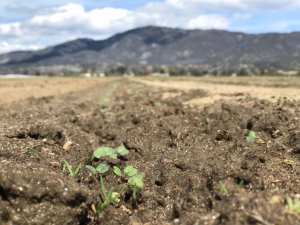
Yes! Organic matter in soil not only promotes the soils biological activity, but gives food it’s flavor!
Sustainable-food consultant David Cohlmeyer is testing how what’s in the earth boosts sweetness and flavour complexity and says, “Soil can make a significant difference to the flavour of produce. Pretty well across the board, just about everything tasted better. Kind of like with a good wine. You know, it’s not just one taste, you get an assortment of tastes.”
“It wasn’t just his imagination. Chefs who used his produce also noticed the difference.” said Wency Leung in an online article called How The Right Soil Makes Your Vegetables Tastier
“The exact same principles apply to vegetables as they do to grapes,” says Antony John, owner of the Soiled Reputation Farm, noting that “eating locally grown food isn’t just a feel-good philosophy; it tastes distinctive too.“
Just one taste of freshly harvested produce and you know that to be true. There truly is a distinctive difference you can taste!
To learn more about soil depletion, and how it effects nutrient content, visit this article in Scientific American.
#3 Supporting Local
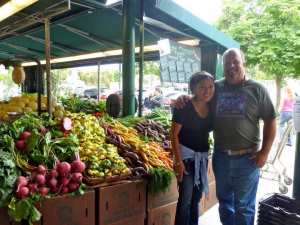
You are supporting local farmers, and the local economy.
We vote with every dollar. Speaking of, you are saving money – Seasonal food will always be cheaper. Our health is not an expense, but an investment.
“Now is the time for our country to recognize and call on family farmers’ ingenuity, strength and value to our past and our future. We can have strong local economies, green energy, a clean environment, healthy citizens and good food – all of these start with family farmers.” – Willie Nelson, Farm Aid President
Benefits of CSA Farming for the Environment and Future Generations:
- Less transport, less CO2 emissions.
- No groundwater pollution from pesticides and fertilizers, ensuring drinking water stays clean for us and future generations.
- No food waste on a sustainable farm. Anything that can’t be eaten or sold goes to feed our livestock.
- No pollution caused by fertilizer run-off feeding into oxygen-depleting organisms.
- No chemicals assure a healthy environment for farm workers.
- Management of healthy nutrient cycling of the soil, assuring that the soil remains productive for generations to come.
- The humane treatment of animals.
- Local food preserves genetic diversity. In the modern agricultural system, plant varieties are chosen for their ability to ripen uniformly, withstand harvesting, survive packing and last a long time on the shelf, so there is limited genetic diversity in large-scale production. Smaller local farms, in contrast, often grow many different varieties of crops to provide a long harvest season, an array of colors, and the best heirloom flavors and varieties, according to the University of Vermont.
- Local food is an investment in the future. By supporting local farmers today, you are helping to ensure that there will be farms in your community tomorrow. That is a matter of importance for food security.
“Preparing and eating food is an intellectual and emotional experience that binds us together, connecting us with one another and with ourselves. Society’s cultural foundations have been bound with food; our ever-increasing disconnection from our rural origins has seen those foundations become dangerously unstable. If we truly want to create a sustainable future, then we must first reconnect the pieces of our support structure — small farm by small farm.” -Louisa Chalmer in How Small Farms Can (Sustainably) Feed The Future
So, what’s in season, and when?
Fall – Apples, squash, grapes, potatoes, sweet potatoes, pears, mushrooms, pomegranates, celery, cauliflower, Brussels sprouts, and more
Winter – Citrus, beets, parsnips, potatoes, squash, garlic, beets, apples, broccoli, cabbage, carrots, cauliflower, and more
Spring – Asparagus, beets, carrots, fennel, kale, leeks, peas, rhubarb, scallions, spinach, turnips, carrots, and more
Summer -Avocado, watermelon, tomatoes, squash, peppers, melons, green beans, cucumbers, chard, and more
Although, eating seasonally isn’t always possible, making an effort to incorporate it will make a difference in not just your health, but for your local economy and community. The more you cook with local, in-season ingredients, the more you’re likely to think about and appreciate where your food comes from, and it may even inspire you to take on some new cooking techniques, like canning, fermenting, or preserving.
For more information about cooking with your CSA:
Visit our BLOG and check out these other amazing resources:
BuenQamino Gluten-Free and Health-Conscious Food, Travel + Lifestyle
CSA Cooking Class 1: Tips and Tricks of a CSA
Boundless Guide: How to Get the Most from your CSA
Do you love knowing…
Where your food comes from and the care your local farmer puts into it growing it?
Let us know on Social Media or Google Review!
This farm is a labor of love and we couldn’t do it without our community and wonderful customers! Please tell your friends about us. Referrals are the greatest compliments and we appreciate them more than we could ever convey! We hope you enjoy exploring our website and become as excited and passionate about local, organically grown food, as we are.
Please tag @sagemountainfarm if you decide to create any recipes using our in-season and local and organically grown produce! Thank you in advance for shopping local, seasonal, sustainable, regenerative and organically grown… and for supporting your local small farmer.
It is our mission to promote a healthier community through our CSA program. If you have any questions, comments or suggestions, please don’t hesitate to contact us anytime by email, phone or in the comments section of this website.
Follow us on social media! We regularly post nutritional profiles about the nutritious food we grow on our farm, and work hard to reconnect people to their food source.
Do you know where your food comes from?
Visit @sagemountainfarm on Instagram, Facebook & Twitter!
Comments, suggestions and questions? Send us a message!
Or contact our farmer directly: phil@sagemountainfarm.com
Visit www.sagemountainbeef.com for more information about our farm fresh meats!
Together, let’s get healthy!
About Your BLOG Writer
PATRICIA (CHRISTINA) KANTZAVELOS, LICENSED PSYCHOTHERAPIST
Patricia (Christina) Kantzavelos is a San Diego-based Licensed Clinical Social Worker (LCSW), life coach, and writer. She has over 10 years of clinical experience in a range of settings, including both outpatient and inpatient psychiatric services, acute inpatient hospital services (telemetry, medical/surgical, labor and delivery, ER, and ICU), insurance case management, assertive community treatment (ACT), home health, hospice, applied behavioral analysis (ABA) for children with Autism Spectrum Disorder (ASD), disaster mental health, and private therapy and coaching. She likes to meet her clients where they are. She is warm, interactive, and treats everyone with respect, sensitivity, compassion, and does not promote the use of stigmatizing labels.
She specializes in chronic health conditions and trauma, which she understands first hand. Chronic medical conditions (i.e. diabetes, dysautonomia, EDS, Lyme disease, Hashimoto’s, mast cell activation syndrome, vasculitis, sickle cell disease, mold illness, etc.) often come with significant challenges, like fear, anxiety, medical PTDS, and may interfere with relationships and daily function. She utilizes various holistic evidence-based treatment modalities and practice-based evidence, contingent on each person’s needs and goals, with an added focus on mindfulness techniques, positive psychology, and strengths-based therapy. In addition, she provides life coaching, case management, and elder and disability care planning and support. She received both her BA and MSW from the University of California Los Angeles (UCLA) and her MLIS from San Jose State University (SJSU). She is also a writer for Edible San Diego, and an award-winning gluten-free and health-conscious travel and lifestyle blogger, @buenqamino.
BuenQamino is a San Diego-based, health-conscious and award-winning gluten-free travel and lifestyle blog designed to inspire adventure and healthy living without limit. We’re here to support you in creating the path of your dreams, regardless of any dietary restrictions. We hope the articles, photos, and videos on this site will help you navigate through real and imagined obstacles and empower you to create your own adventure — or join in on ours! FIND OUT MORE
CHRONIC ILLNESS WARRIOR
As a chronic illness warrior herself, she understands the other side of the couch (or, screen), and how important it is to talk to someone who gets it.
She has battled with food sensitivities and various autoimmune diseases for decades, and in 2007 she was first diagnosed with postural orthostatic tachycardia syndrome (POTS). She was later diagnosed with celiac disease, and in 2018, she began experiencing new and debilitating symptoms, only be diagnosed with various autoimmune diseases and illnesses. In October of 2018, she thankfully found a Lyme literate doctor (LLMD)/rheumatologist and was finally diagnosed with chronic Lyme disease, co-infections, mold toxicity, and other ailments, which is when her healing journey truly began.
Her healing has included a mixture of eastern and western treatments, nutritional changes (organic, gluten-free, casein-free [dairy], alcohol-free, and mostly soy-free and refined sugar-free), as well as switching to non-toxic living, and clean beauty. She completed DNRS (neural-retraining therapy) and received EMDR trauma-informed therapy, as well as prioritized radical self-care, including journaling, painting, joining CoDA, meditation, and being out in nature as often as possible. She can’t stress how fierce the mind-body connection is, and how much mental health and trauma plays a role in chronic illness. From being couch-bound, and sensitive to just about everything (scents, food, EMF’s), she is now back in the world, hiking, and tolerating most foods, and scents.
Although she is still very much on the road to healing, she has made a conscious decision to choose an attitude and intention of thriving, over an obsession with surviving and hopes to share that with others.
Let’s work together to get to the root cause of your dis-ease, and invite wellness and joy.
Check out Christina’s book!






